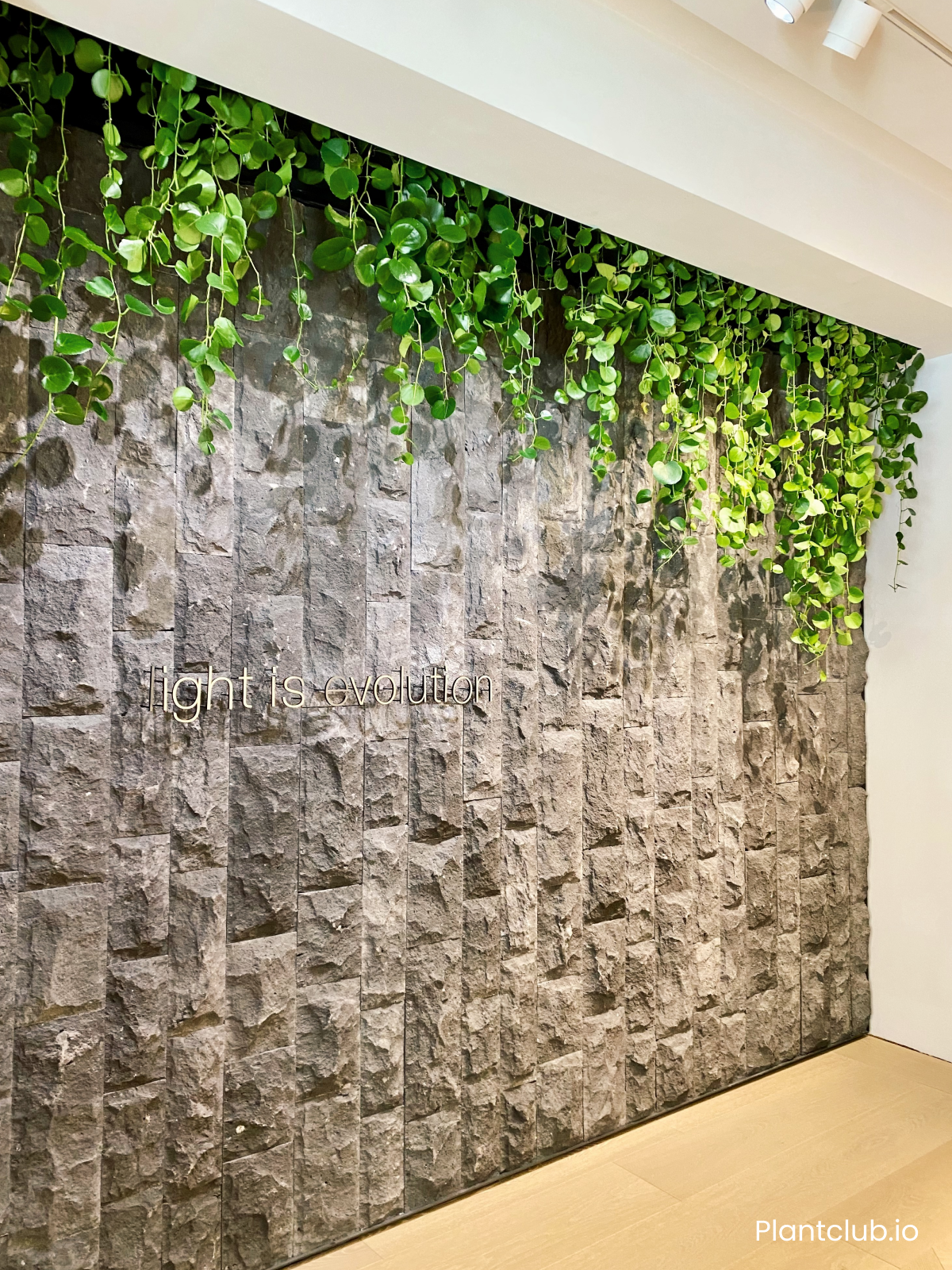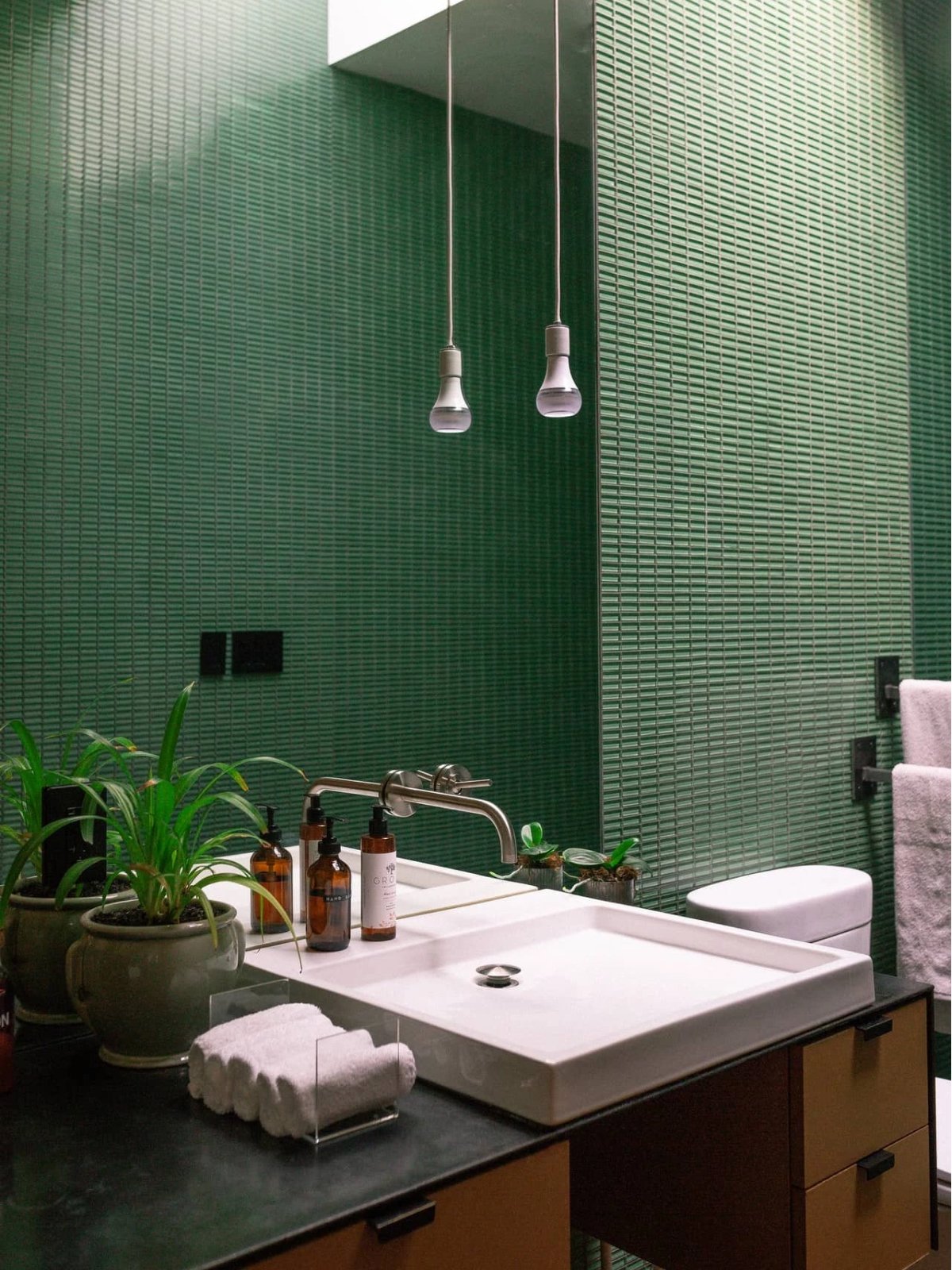Biophilic design 101: natural elements and employee wellness
Whether in the office or at home working remotely, our everyday work experience has become increasingly digital and defined by screens. How can companies and employees incorporate design principles that bring the outdoors in to create positive work environments that increase productivity, wellness, and overall health benefits? Say hello to biophilic design.
The principles and benefits of biophilic design are not far off from what we’ve discussed in the past with implementing green workplaces. In the global North, people are estimated to spend 90% of their time indoors, cut off from natural surroundings and experiencing negative impacts to mental and physical health. Biophilic design encapsulates the approach of blending more of the outside world into our inside worlds through more efforts than just visuals.
Plantclub used biophilic design principles of texture, light and plants for this feature wall.
What is Biophilic Design?
Biophilia was originally coined to describe the human tendency toward focusing on natural and lifelike processes. The concept that followed, biophilic design, was first introduced in the 1980s by biologist Edward O. Wilson who observed how “increasing rates of urbanization were leading to a disconnection from the outside world.” From the industrial boom, to rising city populations, to our present day online tendencies, the consensus has always been that we need more nature in our everyday lives.
Biophilic office design takes the proven abilities of natural surroundings to decrease stress, improve mood, and maximize cognitive performance and incorporates it in strategic sensory ways.
Some examples include plants and abundance of greenery, patterned carpeting that mimics earth-like features, more opportunities for natural light, design concepts using natural materials, and even scentscapes.
Here, green tiles and plants add texture and calmness.
How Does Biophilic Design Work?
Mimicking natural surroundings helps us feel more connected to our spaces, connects our brains to the passage of time, and encourages our relationships with nature which leads to more curiosity and creativity.
From natural light’s proven abilities to boost employee productivity through supporting circadian rhythms or indoor jungles improving air quality and health, the more natural elements a workspace has, the more positive the workflow. UK-based charity Mind, states that spending time in green spaces or bringing more nature into your everyday life can improve your mood, reduce stress, provide peer support, and help you be more active.
Creating healthier work environments is shown to increase staff retention by 53% and one Harvard study showed that improving air quality even improved mental cognition.
Consider adding multiple textures to a room to mirror natural randomness.
Opportunities for Community and Collaboration
The term “neighborhoods” is used in office design to refer to the breaking up of space into areas that mimic outside life. So just as one may prefer to live in an area broken up by gardens, parks, or other natural features, workers should be met with the same experiences in the workplace, enjoying a more naturally separated environment. This gives more opportunity for a community-oriented office space, not unlike what one would find in a neighborhood. This approach can be found in biophilic design.
Using a room dividers as a plant shelf is a great way to create a green distinction of space.
Biophilic Design and Your Workspace
While some major offices choose to incorporate treehouses and even streams like Amazon’s ‘Spheres’, not all companies can afford an entire biophilic architecture makeover. If you’re looking for ways to introduce biophilic office interior design elements into your workplace or home office, here are some tips to help you get started.
Indoor plants can improve employee wellness from air quality to general mood. Think about placement and using them as natural dividers as well.
Irregularly patterned or textured rugs can mirror outdoor surroundings or green grass.
Working by a window is a simple and effective way to increase exposure to natural light. If this is not possible, try adding different light settings for different times of the day that can mimic the passage of time.
Introduce more natural materials. Think wooden boxes, wall art, or living walls.
Whether it’s greening up your workplace or adding more natural lighting to your home office, there are many ways to take advantage of the benefits of biophilic design.
Plantclub.io provides you and your colleagues with the benefits of plants, wherever you work. Rent office plants and transform your space into a green oasis, with flexible monthly membership options to suit your size. Diversify your employee perks with a dedicated company store, where you can give green gifts and your team can buy plants for their home office. Book a time to chat with us today.





